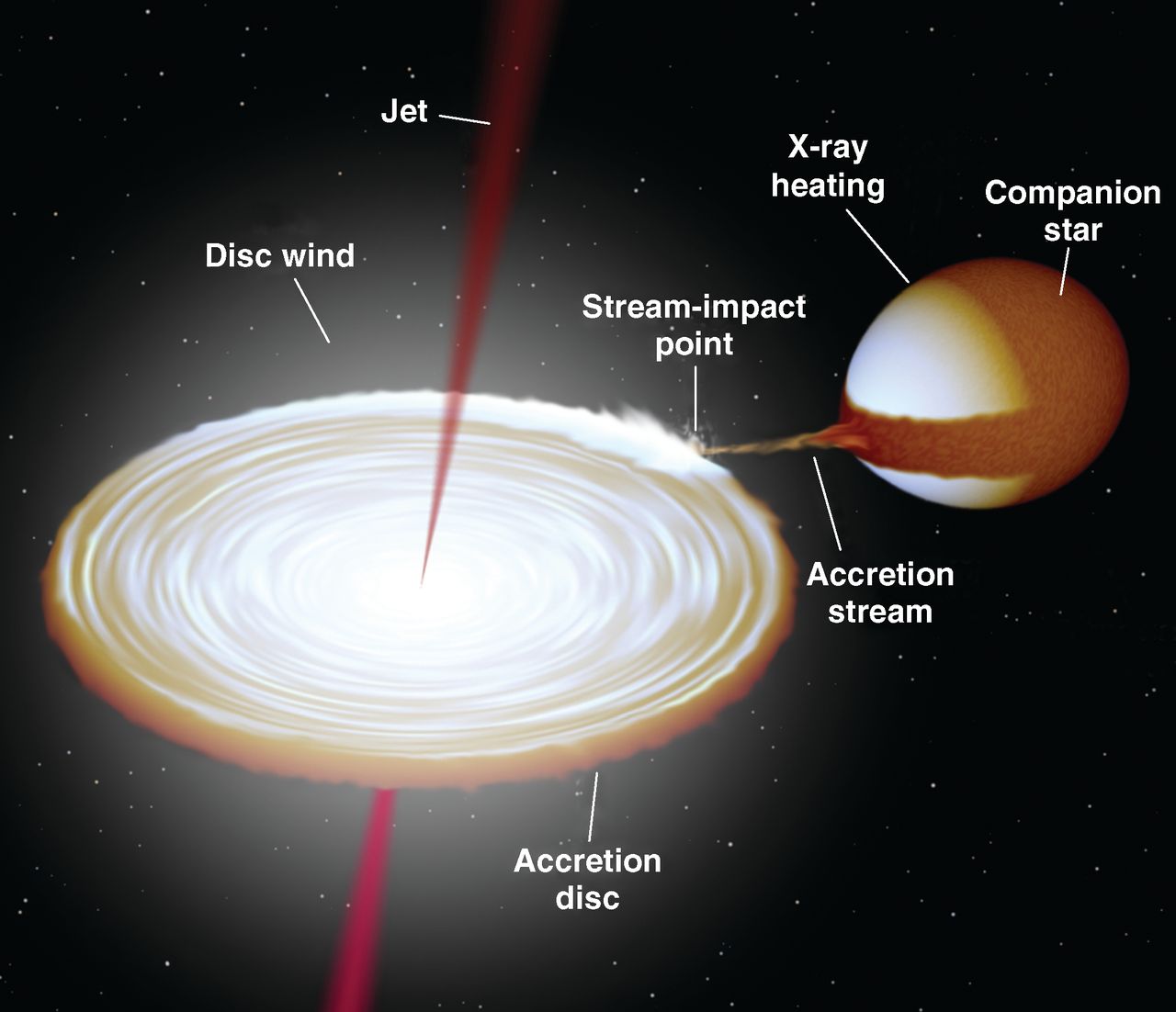Modelling Disc Winds From X-Ray Binaries
Astrophysics Internship - 2023
Cover image produced with BinSim by Rob Hynes (Hynes, 2010).
Often black holes will be a part of a binary system, where its companion is a star in an earlier stage of its life. X-ray binaries (XRBs) are examples of such systems. In these systems, matter from the companion star can by attracted by the black hole and form an accretion disk around it. These accretion discs eject material due to thermal and/or magnetic processes. Disc winds also carry away some material and are identified by P-Cygni profiles in spectra. These are characterised by an emission due to the deexcitation of atoms in the accretion disk combined with a blueshifted absorption at a lower wavelength as can be seen in Figure 1.

This has been seen in data for XRBs in the optical region, but not in simulations. Using the Monte Carlo radiative transfer code: PYTHON, we explored the system’s parameter space to find the conditions under which such a profile arises. By analysing the data using a variety of techniques, we successfully found the conditions to simulate P-Cygni profiles for XRBs in the optical spectrum for the first time.

